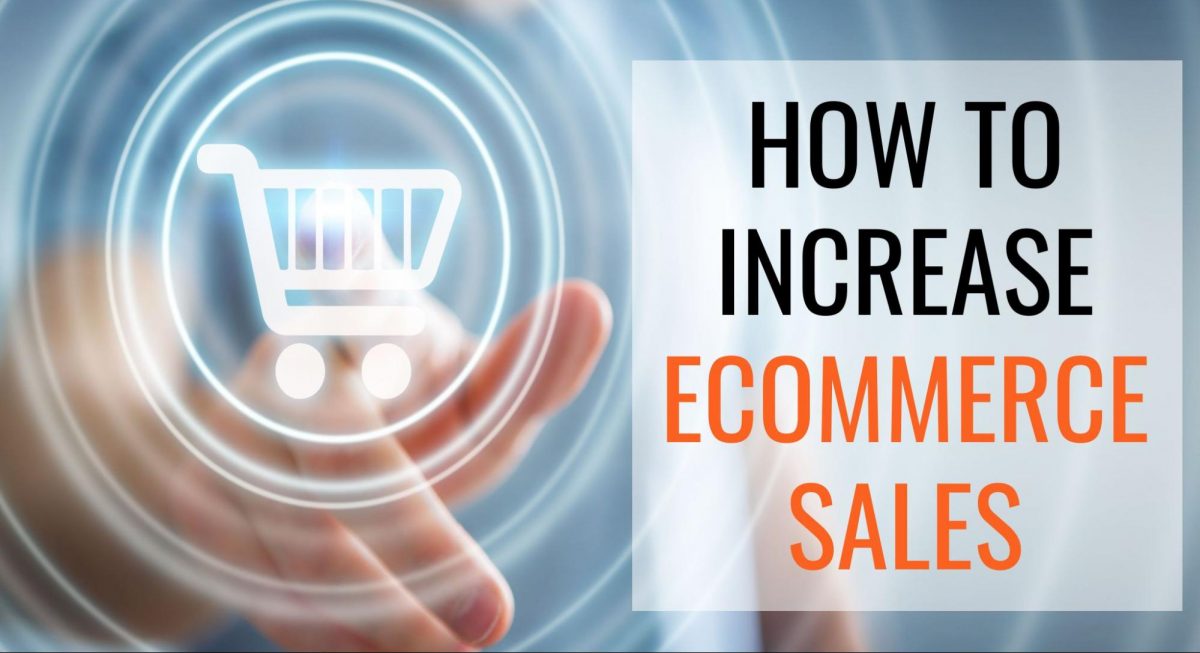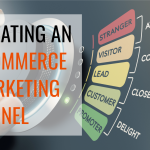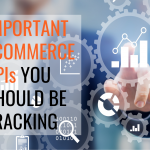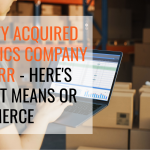“Want to boost your sales?”
“No thanks, I’m good,” said no ecommerce store owner ever.
For an ecommerce store, continued growth is the name of the game. After all, once you stop growing, you’re dead. But often, companies will eventually reach a point where they plateau and just stop.
Fortunately, we don’t have to rely on sheer luck or guesses to increase sales. In today’s age of information, we can access just about anything that we need, including data, resources, tools, and strategies, that can help us to boost sales and grow.
If you’re wondering, “What is the quickest way to increase sales?” Then this article’s for you. Let’s dive in now and find out.
What Are Four General Ways to Increase Sales?
If you’re looking to increase sales, there are four main ways that you can do so:
- You can increase the number of customers that you have,
- Increase the average transaction size,
- Increase the frequency of transactions per customer,
- Or raise your prices.
In the next section, I’ll break some of these down into ten actionable ways that you can go about practically increasing your sales. All of the following strategies fall into one of the above categories. Let’s take a look now.
How Can I Increase My Ecommerce Sales?
If you’ve been wondering what is the quickest way to increase sales, here are some tips and strategies to increase sales this year, and beyond!
Use Data for Personalized Experiences
Despite the availability of data, 60% of companies say they still rely on intuition when creating marketing strategies. The same study found that 64% of companies that fully embrace AI are more efficient and productive, with data-driven businesses outperforming their competitors when it comes to productivity and profitability. Using data improves the speed of your decision-making, leading to better conversion rates and in some cases, increased customer loyalty.
Customer segmentation is one of the best ways to use data to increase sales. Segmentation is a key part of personalizing the customer experience, helping you deliver marketing messages to the right customers at the right time.
Segment customers according to:
- Place in the Marketing Funnel: A long-time customer would appreciate being rewarded with exclusive, personalized deals and offers, while an interested user might need more exposure to your brand through more content or a welcome offer.
- Demographics and Interest: Match your offers based on users’ location, age, gender, and interests.
- Buyer Personas: Segment your customers even further into buyer personas. Understand their unique motivations, pain points, hesitations on buying, and product concerns and expectations. Solving these problems can help you create copy and offers that remove buying obstacles.
Sell on Social Media Platforms
In 2022, big name retailers like Nike, Macy’s, and GoPro have social media stores with shoppable content. Social selling simplifies the buying journey and buyers feel like they can engage with the company on a more personal level. TikTok executive Sandie Hawkins says social selling is like “word of mouth on steroids.”
Businesses can link their online store catalogs to their social media accounts on Instagram, Facebook, Twitter, Pinterest, and TikTok. Here’s how you can use social selling to bring in more sales:
- Focus on content and experiences. Live streaming and augmented reality experiences are great ways to engage social shoppers.
- Social media users tend to be in a distracted state of mind when on the platform, with most of them there to browse or catch up with friends. Buying big-ticket items might not be at the top of their minds. Prioritize your most popular and low-cost products to generate leads and boost sales.
- Don’t upload your whole catalog, which might overwhelm social media users. Aside from your bestsellers, select products that you know will resonate with your target customers. You can start by testing out different products and see what appeals to your target audience.
Collect More Reviews and Social Proof
Are reviews really that crucial when it comes to sales? Yes. Ninety percent of consumers make an effort to read reviews before buying a product and 79% of shoppers say they trust online reviews. Here are some ideas on how to use reviews to boost sales:
- Automate your review collection process with apps like Yotpo and Reviews.io, which remind buyers to write reviews after the product is delivered.
- Product pages that feature customer reviews bring in 3.5 times more conversions than those without. Feature customer testimonials and reviews on the main page of your website and on the product page.
- Google Reviews are the most popular channel for people to check reviews. Optimize your Google business profile and add schema markup to your website, which will display stars on organic search results to your website, like this:
(Source: Google)
Customer Re-engagement and Remarketing
Customer re-engagement or remarketing is the process of getting past customers interested in your product or service again. These could be customers who have bought from you once or customers who canceled their service or account with your business. Remarketing lets you capture lost leads and turn them into sales.
Boost sales and develop your remarketing strategy by:
- Collecting customer information regularly and organizing it with a CRM (customer relationship management) platform.
- Send online surveys to customers who have been inactive for several months.
- Direct communication through targeted email marketing campaigns and return promotional offers are great ways to spark customers’ interest in your products again.
- Cart abandonment emails are effective in reminding customers to complete their transactions. Consumers open 44.1% of cart abandonment emails, and brands that use cart recovery email sequences can bring back up to 29% in lost sales.
Check out this cart abandonment email from Chubbies. They use a catchy subject line, the body has clean and on-brand visuals, and a prominent call-to-action (CTA) button:
(Source: Shopify)
Offers like discounts or free shipping may also get the customer to hit that buy button, like this one from Rudy’s:
(Source: Shopify)
Get our How to Increase Ecommerce Sales - Worksheet delivered right to your inbox.
Upsell and Cross-Sell
Upselling and cross-selling are sometimes used interchangeably, but they mean different things. Upselling is when a customer is presented with the choice to upgrade to a premium or more expensive version of the item being purchased. On the other hand, cross-selling is when a customer is offered a related product or service with the item.
Here’s how to use upselling and cross-selling to increase sales:
- Don’t recommend a product that’s at a significantly higher price point than the one being purchased.
- Use your segmentation data and customer personas to zero in on your customers’ pain points. Highlight how the added value of the premium version can meet those needs.
- Create a sense of urgency by offering an in-the-moment discount or coupon that’s limited for that time only.
To cross-sell successfully, use product recommendation apps like HA Bundles, Upsell and Cross-Sell, Candy Rack (one-click upsell), and ReConvert (thank you page upsells and cross-sells). You can also send post-purchase recommendations through email, like this one from The Dollar Shave Club:
(Source: Sleeknote)
Adjust Your Pricing Strategies
Price has a huge impact when it comes to conversion. There are strategic ways to price your products without driving your prices down. Get more sales with these pricing strategies:
- Reframe your prices. High dollar value products and services might shock customers and make them hesitate about making a purchase. Reframe the value of your product by stating it differently. A subscription that costs $2000 per year can be stated as $166 per month. A bite-sized price point sounds more affordable and persuasive.
- Flexible Buy-Now-Pay-Later payment plans help ease the cost of expensive items.
- Subscriptions help you automate repeat purchases and reduce churn. It’s also a predictable source of sales. Apps like Bold and Subscriptions by Recharge help you set up subscription models and payments on your online store easily.
- Tiered pricing lets businesses offer discounts to customers who purchase in large quantities in one order. This helps increase sales volume per order and gives customers an incentive to spend more.
(Source: Shopify)
Implement Loyalty Programs
Loyalty programs have been around for hundreds of years. Businesses use them because they encourage repeat visits, increase the lifetime value of a customer, and bring in referrals. In 2022, loyalty programs continue to do that, and more- it’s also a great source of first-party data.
Some businesses make the mistake of creating loyalty programs that are hard to understand and redeem, leading customers to abandon them. A complicated loyalty program can diminish the customer experience and cause frustration with your brand.
Combat this by making sure your incentive strategies are rewarding, easy-to-understand, and easy to redeem.
Baby Tula’s Collector’s Club is a great example of a rewards program. They have a simple interface and all the mechanics are clear. Within a month, they had 85,500 program sign-ups with 4.21 million points earned. 1,084 rewards were redeemed at a 24% redemption rate.
(Source: Shopify)
Ghost makes it easy to redeem points and offers points as an option on the payment page:
(Source: Shopify)
Add Value With Bundling
Another great way to increase sales is with bundling. Look for ways to offer value to your customers through bundling or packages. We’ve found that we tend to have our highest converting offers when we don’t even offer the option to buy just one item. Instead, we offer bundles of 3, 6, or 9. You may want to consider giving bigger discounts for larger purchases.
Create a Great Customer Experience
The sales process consists of touchpoints, or the number of times a customer encounters your brand before they decide to make a purchase. That could be exposure to your brand through social media engagement, your online store or app, or influencer and media features. “Today, people buy experiences, not products,” says Adobe CEO, Shantanu Narayen. In 2022, boost sales by improving your brand experience with these ideas:
- Use chatbots to respond rapidly to customer questions and concerns.
- Invest in user experience (UX) Design. UX design helps users do what they intend to do when interacting with your site or app. It enhances engagement with your brand and site, leading users to complete transactions seamlessly. UX design includes strong branding, data security, and the operational simplicity of your website.
- Make sure your online store is mobile-responsive and loads fast.
- Optimizing your calls-to-action is an easy and straightforward way to increase conversions. Keep them brief, straight to the point, and make sure they stand out
- A/B test your website and page elements regularly. Continue refining your strategy if some of them don’t convert well.
Try to Reach New Customers
Keeping existing customers costs less than acquiring new ones, but it’s never a bad idea to continue scouting for potential customers. Prospecting means generating leads and reaching out to new customers. Here are ideas on how to do it:
- Promoting bestsellers is an effective top-of-the-funnel way to increase sales. Identify your top-performing products and ensure these are the first products your target audience sees in your prospecting campaigns.
- Get more leads with Facebook’s dynamic product ads (DPAs) for broad audiences. These ads show relevant services or offerings to people based on interests, intent, and actions. DPAs show ads to potential customers who have visited or viewed similar websites to yours. To use dynamic product ads, you need a Facebook Pixel and a Product Catalog. Make sure to select the option to not show your ad to old or existing consumers who have already bought from your company.
The Next Steps
There are a number of ways for small businesses to increase sales. It might seem overwhelming to implement all of these at once, so start with the basics first:
Step One: Social Selling: Social commerce is about reaching customers where they are. Leverage your social media presence and engage with your customers, post shoppable content, and experiment with live selling on your social media accounts.
Step Two: Start a Loyalty Program: Well-implemented loyalty programs help strengthen a brand’s relationship with its customers and foster a sense of community, which is crucial in these times when people are longing for more personal and authentic connections.
Step Three: Develop a Great Customer Experience: Companies that offer great brand experiences that delight their customers and stand out in a sea of competitors. People are more likely to be loyal to a brand that is authentic, puts its customers first, and provides value and ease at each step of the buying journey.
Do you want to create sales strategies that will help your business to succeed? Reach out now for your free 20-minute consultation. Let’s find some solutions that will help your business grow, fast.
Get our How to Increase Ecommerce Sales - Worksheet delivered right to your inbox.







